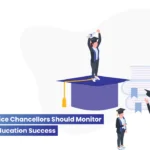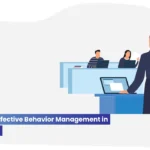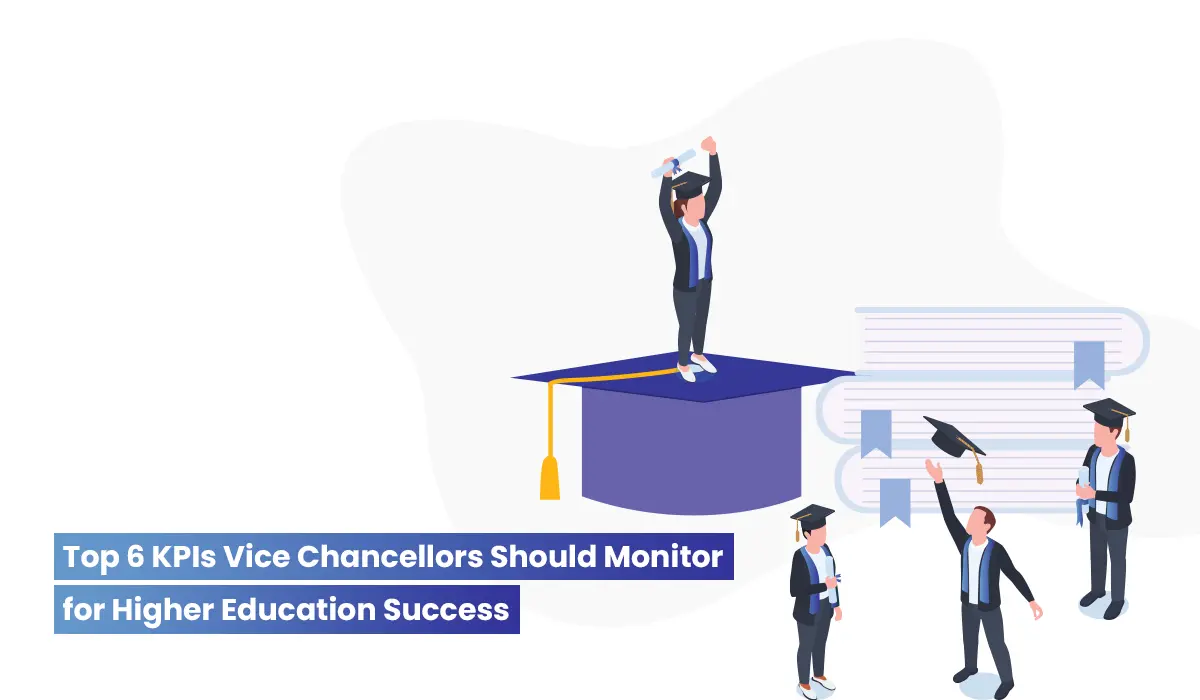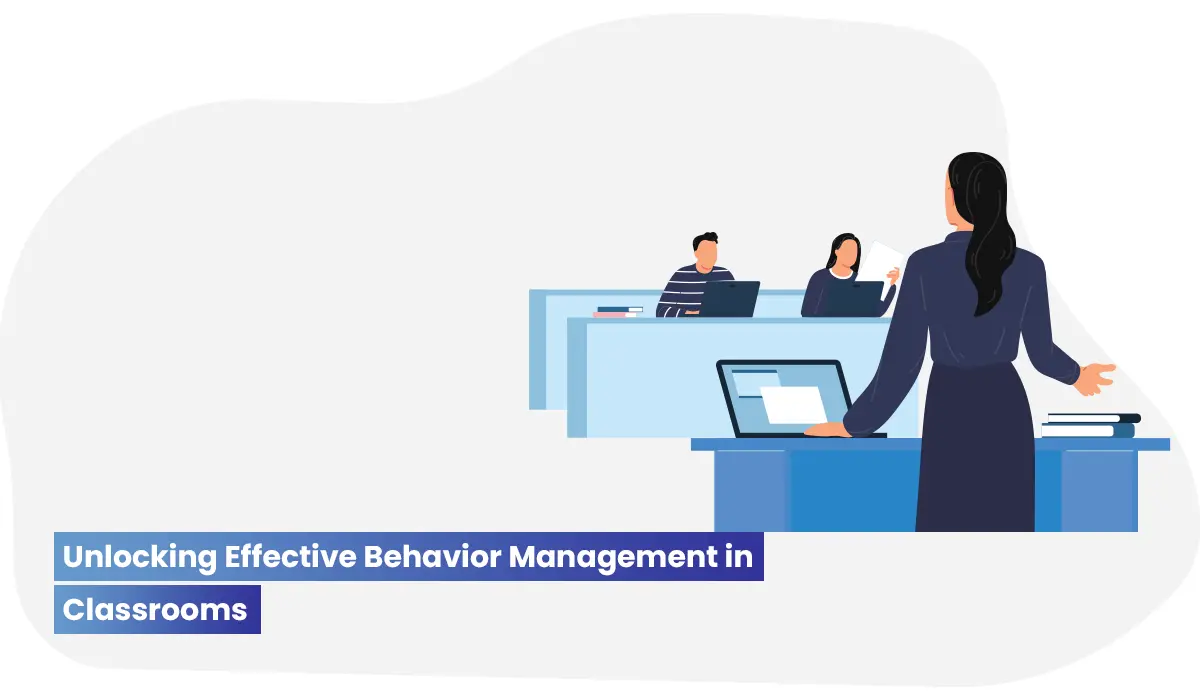Introduction: The Role of the Vice Chancellor in Steering Institutional Success
Did you know that 73% of higher education institutions that closely monitor their key performance indicators (KPIs) consistently outperform their peers in student retention and financial health? As a Vice-Chancellor or Provost, you’re steering the ship, and the numbers that matter most are right in front of you – if you know where to look.
The world is growing super fast and you can’t afford to rely on guesswork or gut feelings. The success of your institution depends on having a clear, data-driven view of what’s happening across your campus. From student retention to faculty performance, keeping an eye on the right metrics is what separates thriving institutions from those that struggle to keep up.
In this blog, we’ll dive into the powers and duties of the Vice Chancellor, and the KPIs every Vice-Chancellor or provost like you should be tracking to ensure long-term success. No matter whether you are trying to hike student satisfaction in your HEI or ensure financial sustainability, we’ll get you covered —show you how tools like Creatrix Campus can make it all easier. Let’s get started.
Vice Chancellor’s Responsibilities in Higher Education

Your key responsibilities and authorities are simply huge! As a Vice Chancellor, you’re the driving force behind your institution’s success. Beyond daily operations, you shape the university’s vision, steering academic excellence, financial sustainability, and overall growth. Every decision, from faculty to infrastructure, impacts the institution’s future.
Because of your capacity to set rules, authorize budgets, and oversee curriculum changes, you are in command of progress. But with tremendous power comes great responsibility, and with leaping university leadership challenges the job is to make sure that every effort is in line with long-term objectives, accrediting criteria, and—above all—the needs of your faculty and students. Herein lies the real challenge—and opportunity—of your role: striking a balance between these priorities.
This is where the distinction is entirely in your leadership. You have the power to lead revolutionary change and establish the benchmarks for creativity in higher education.
6 Top Key Performance Indicators (KPIs) that Matter Most to Vice Chancellors

As a Vice Chancellor, we know that KPIs or university performance reviews aren’t just numbers on a dashboard—they’re your roadmap to achieving greater institutional goals; with them comes accruing and sustaining accreditations too! Therefore your KPIs can’t just be plain; they should directly align with your university’s mission, guiding you through everything from student success to financial stability.
We have the kicker: monitoring the right metrics allows you to pivot quickly when university leadership challenges arise and stay ahead in long-term planning. Whether you’re looking at student retention rates, faculty productivity, or budget efficiency, having a clear, focused view of your institution’s key data points ensures that every decision you make pushes the university toward growth and excellence.
Let’s explore the KPIs that truly matter for your institution’s success and how they can shape your strategic direction.
1. Student Enrollment and Retention Rates
For Vice Chancellors, tracking student enrollment and retention is critical. A National Student Clearinghouse Research Center report found that the average college retention rate hovers around 61%, with higher retention rates directly linked to improved institutional reputation and financial performance. Monitoring these trends not only provides insight into recruitment performance but also identifies which student populations are flourishing or struggling.
Metrics like as student engagement, dropout rates, and academic support service efficiency serve as a road map for achieving institutional success. According to an Eduventures report, universities that enhanced student engagement saw retention rates climb by up to 15%.
Tracking these KPIs enables you to address possible issues early on, maintaining long-term stability and cultivating a reputation for academic achievement.
2. Academic Program Performance
Being abreast of academic program performance is essential for a vice chancellor to address market demand and student demands. According to a 2023 Educause survey, 78% of colleges currently employ data analytics for program evaluation, demonstrating the critical role that data-driven insights play in ensuring that programs remain effective and relevant. Measuring the relevance and demand for these programs ensures that your offerings stay competitive and impactful.
Data-driven insights not only highlight curriculum strengths but also reveal shortcomings, assisting you in fine-tuning courses to better serve students and industry trends. Institutions that regularly improve academic performance experience an increase in global rankings and student enrollment, which drives growth and strengthens your university’s image worldwide.
3. Faculty Performance and Workload Management
For the Vice Chancellors, we have the third deal ready; managing faculty performance is crucial for your institution’s success. Keep tabs on key metrics like faculty engagement, workload distribution, and research output. A recent Inside Higher Ed study shows that universities with well-balanced faculty workloads and strong support systems see up to a 20% boost in overall performance.
Your role involves using tools to monitor these metrics and support faculty development effectively. By doing so, you help boost faculty satisfaction and productivity, which in turn drives the institution’s excellence and growth.
4. Financial Health and Resource Management
Alright now, let’s talk finances. Keeping your institution financially healthy is key to its long-term success. Track KPIs like budget allocation, revenue streams, and cost management. It’s essential to monitor tuition revenue, operational costs, and external funding closely.
A sharp focus on these financial KPIs helps you ensure that your university remains sustainable and thrives in the long run. After all, solid financial health means you can keep pushing boundaries and supporting your academic mission.
5. Student Satisfaction and Experience
Let’s dive into student satisfaction. Their opinion isn’t just nice to have—it’s crucial and a must to have; they help shape improvements and make your institution shine. Keep an eye on student satisfaction surveys, support services, and campus life to understand what’s working and what needs a tweak.
Focusing on creating an awesome student experience not only boosts retention but also enhances your institution’s reputation. After all, happy students mean a thriving campus and a stellar reputation.
6. Accreditation and Compliance
Lastly, to all Vice Chancellors, navigating accreditation and compliance is a big deal, but it’s key to keeping your institution’s reputation solid. Keep ahead of the curve by monitoring metrics that show your readiness and compliance with standards.
According to a 2023 Chronicle of Higher Education report, institutions that stay proactive with these metrics enjoy a 30% higher success rate in maintaining accreditation. So, stay sharp, track your progress, and make sure your institution stays in top shape with accrediting bodies.
The Role of Education Technology Solutions for Leadership in KPI Monitoring
Vice Chancellors, technology is a game-changer for keeping tabs on KPIs. Embracing technology not only simplifies the whole of KPI tracking but also enhances your decision-making process by double! With Creatrix Campus, you’ll have the tools you need to stay ahead and drive your institution’s success. Here’s how advanced data platforms and dashboards can transform your KPI tracking:
Streamlined Tracking: Advanced dashboards consolidate data, making it easy to monitor key metrics without sifting through endless reports.
Instant Insights: With Creatrix Campus, you’re always in the loop. Get real-time updates that keep you informed and ready to act on the latest developments in your institution.
Smart Decisions Made Easy: Detailed analytics are right at your fingertips, so you can spot trends, spot areas needing attention, and steer your institution in the right direction with confidence.
Customizable Metrics: Tailor your dashboards to focus on the KPIs that matter most to your institution, ensuring relevant data is always within reach.
Embrace technology to simplify KPI tracking and enhance your decision-making process. With Creatrix Campus, you’ll have the tools you need to stay ahead and drive your institution’s success.
Conclusion: Building a KPI-Driven Institutional Strategy with Creatrix Campus
The powers and duties of the Vice Chancellor are immense. As Vice Chancellors, prioritizing KPI monitoring is crucial for steering your institution toward success. By focusing on key metrics, you gain the clarity needed to drive strategic decisions and ensure sustainable growth.
Creatrix Campus’ Strategic Planning’s data-driven approach empowers you with real-time insights and detailed analytics, making it easier to achieve academic excellence and long-term success. Embrace these tools to build a robust KPI-driven strategy and lead your institution to new heights. Talk to us now.
#Key #KPIs #Vice #Chancellor #Responsibilities #Higher #Education










